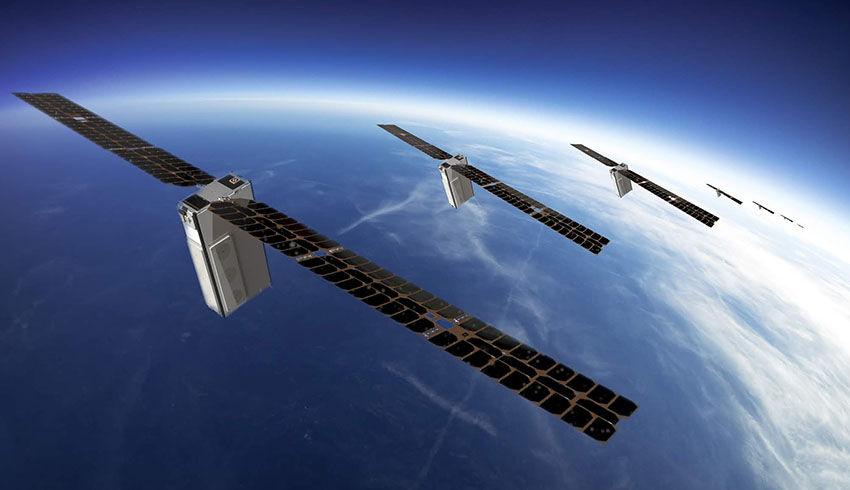
But its notable technical achievements had not been well understood by shareholders. SAS co-founder and chief technical officer Meidad Pariente said several recent discussions with shareholders highlighted a lack of visibility on many of its notable technology achievements.
“In many aspects of commercial space endeavours, Sky and Space Global is at the forefront, and for some we are leading and setting the tone,” he said in a letter to shareholders.
“We are not resting, we push ourselves to always be on the forefront of technology and innovation while evaluating processes and performance so we can learn and improve … after all we’re changing the world."
But it was not easy to improve the world and do something no one has done before, Pariente said.
“Sky and Space Global’s talented team has been able to lead and be the first in almost every aspect of the emerging commercial nanosatellite communications sector,” he said.
SAS, based in Perth, is well advanced in plans for what it calls the Pearls constellation of as many as 200 nanosatellites in equatorial orbit, providing low cost communications, data and internet services for markets in Africa, South America and Asia.
Under the new 6U agreement with Danish satellite builder GomSpace, there will be an additional constellation high inclination orbits, allowing full global coverage, including Australia, Russia, China, South Africa, Argentina and Canada.
The first launch is planned for early next year. However, the company has faced its share of challenges, including cash flow problems and the loss of two board members who are still to be replaced.
Pariente said SAS did infrastructure – building communications roads in space, envisaging the entire scope of work, developing all network related aspects of translating technology to business.
He said SAS had signed more than 40 contracts and that was not trivial.
“This is a huge confirmation from the market that we’re on the right path and there’s a very strong need and demand for our services,” Pariente said.
SAS already has some runs on the board. In June 2017, it launched its Three Diamonds nanosatellites aboard an Indian rocket for technical risk reduction and to demonstrate its capabilities to customers.
“We have also been able to use the Three Diamonds for business intelligence spectrum monitoring from space in order to map frequency usage by ground and space systems in our future service zones,” he said.
“The spectrum monitoring task, which was never intended to be one of the Three Diamonds’ mission goals, is equivalent to performing a site survey for real estate prior to commencing the build process.”
Pariente said developing the Pearls required technological breakthroughs, particularly developing launch canisters.
“D-Orbit from northern Italy accepted the challenge and with carbon-fibre composite materials and a design used for electric Formula-1 racing cars. They managed to design, test and qualify the strongest, lightest canister in the new space industry available today,” he said.
Pariente said controlling more than 200 nanosatellites in five different orbits, maintaining relative distance with an ability to perform avoidance manoeuvres if required and providing 24/7 coverage service was a very complex challenge.
That required either a large operations team or a cutting-edge innovative autonomous algorithm that allows the nanosatellites in the constellation to interconnect and maintain their relative location and distance.
“In the last year and a half we have developed, with the aid of a group of world-class aerospace engineers from SCISYS Darmstadt, an autonomous algorithm that allows satellites, for the first time, to autonomously manoeuvre by sharing information and making group decisions to keep the constellation up and running and avoid collisions with other space objects,” he said.
“This algorithm is already being tested in a system-of-systems super-simulation.”
Pariente said this would run in parallel on multiple cloud processing servers and was one of the most complicated ever built.
That will allow SAS to run network performance check scenarios, which include more than 200 satellites and more than a million users.
To allow user access, SAS needs to develop a ground terminal but it has proved challenging to find someone able to produce a suitable terminal that is low cost, has low power consumption, is portable and durable.
Pariente said $10 difference in cost was not a lot but it became significant for production of hundreds of thousands.
“After searching the globe, screening proposals and talking to engineers, we managed to narrow down our options to two manufacturing candidates that were found to be suitable for our commercial needs,” he said.
To operate the satellites and ground services, SAS had to develop its own proprietary software products, which it had done through its own software powerhouse.
“Anyone with deep pockets can purchase hardware and launch satellites … having them function like ours, well that is a massive challenge and achievement,” he said.
Receive the latest developments and updates on Australia’s space industry direct to your inbox. Subscribe today to Space Connect here.









